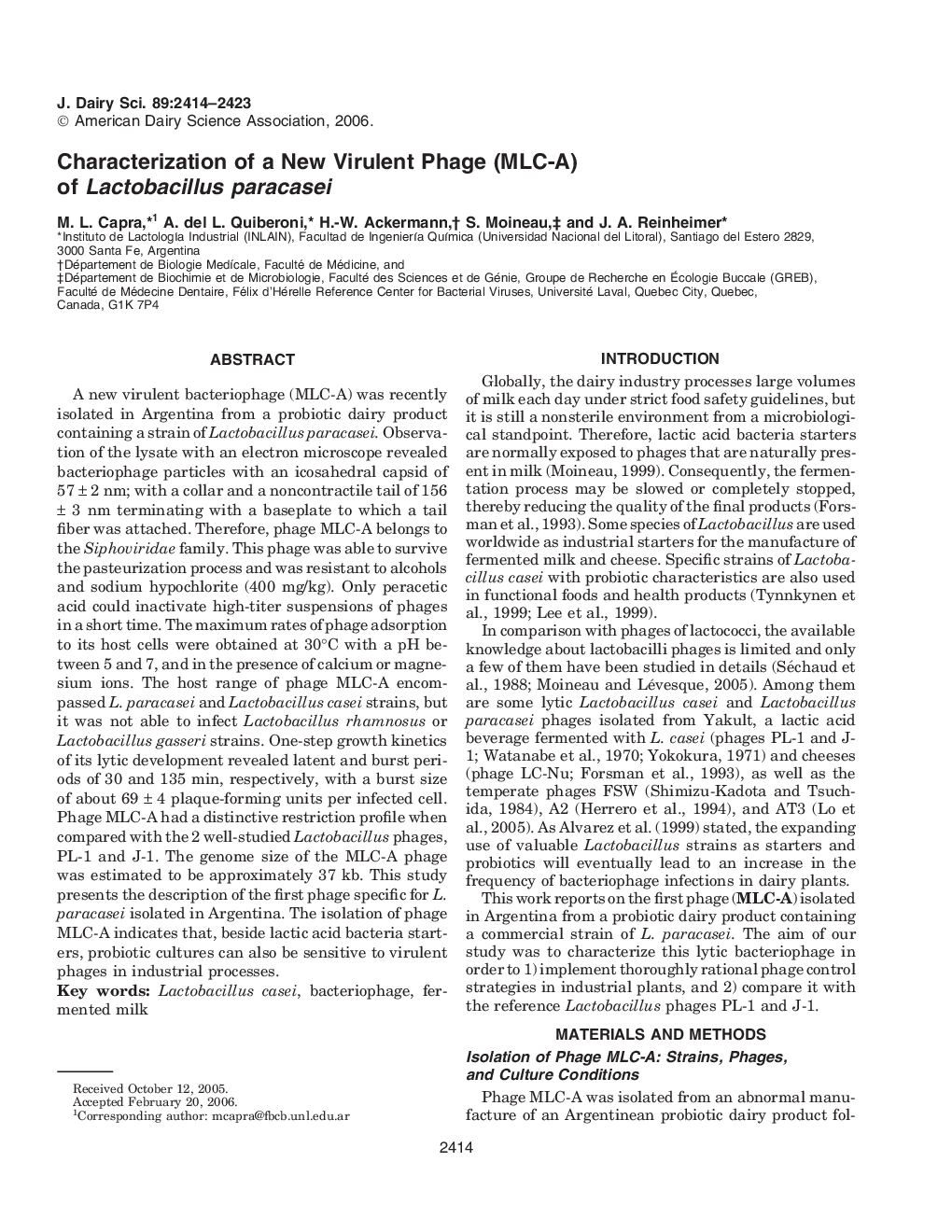| Article ID | Journal | Published Year | Pages | File Type |
|---|---|---|---|---|
| 2441349 | Journal of Dairy Science | 2006 | 10 Pages |
Abstract
A new virulent bacteriophage (MLC-A) was recently isolated in Argentina from a probiotic dairy product containing a strain of Lactobacillus paracasei. Observation of the lysate with an electron microscope revealed bacteriophage particles with an icosahedral capsid of 57 ± 2 nm; with a collar and a noncontractile tail of 156 ± 3 nm terminating with a baseplate to which a tail fiber was attached. Therefore, phage MLC-A belongs to the Siphoviridae family. This phage was able to survive the pasteurization process and was resistant to alcohols and sodium hypochlorite (400 mg/kg). Only peracetic acid could inactivate high-titer suspensions of phages in a short time. The maximum rates of phage adsorption to its host cells were obtained at 30°C with a pH between 5 and 7, and in the presence of calcium or magnesium ions. The host range of phage MLC-A encompassed L. paracasei and Lactobacillus casei strains, but it was not able to infect Lactobacillus rhamnosus or Lactobacillus gasseri strains. One-step growth kinetics of its lytic development revealed latent and burst periods of 30 and 135 min, respectively, with a burst size of about 69 ± 4 plaque-forming units per infected cell. Phage MLC-A had a distinctive restriction profile when compared with the 2 well-studied Lactobacillus phages, PL-1 and J-1. The genome size of the MLC-A phage was estimated to be approximately 37 kb. This study presents the description of the first phage specific for L. paracasei isolated in Argentina. The isolation of phage MLC-A indicates that, beside lactic acid bacteria starters, probiotic cultures can also be sensitive to virulent phages in industrial processes.
Related Topics
Life Sciences
Agricultural and Biological Sciences
Animal Science and Zoology
Authors
M.L. Capra, A. del L. Quiberoni, H.-W. Ackermann, S. Moineau, J.A. Reinheimer,
